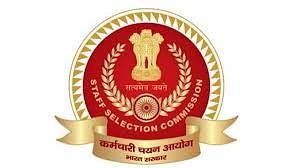
Student organizations play a crucial role in the holistic development of students in educational institutions. These organizations provide opportunities for students to explore their interests, develop leadership skills, foster social connections, and contribute to the campus community. In this article, we will discuss the importance of student organizations, their benefits, and various types of student organizations that exist.
Importance of Student Organizations:
Student organizations offer numerous benefits to students that extend beyond the academic curriculum. They provide a platform for personal growth, skill development, and experiential learning. Here are some key reasons why student organizations are important:
1. Leadership Development: Student organizations offer students opportunities to take on leadership roles and develop essential leadership skills such as decision-making, communication, problem-solving, and teamwork. These skills are valuable for their future careers and personal lives.
2. Personal Growth: Joining a student organization allows students to step out of their comfort zones, explore their interests, and discover their passions. They can develop self-confidence, self-awareness, and a sense of purpose through their involvement in these organizations
3. Networking and Social Connections: Student organizations provide a platform for students to meet and interact with like-minded individuals who share similar interests. This fosters a sense of belonging, builds social connections, and creates lifelong friendships.
4. Skill Enhancement: Student organizations often focus on specific areas of interest, such as debate, music, sports, entrepreneurship, community service, and more. By participating in these organizations, students can develop and enhance their skills in these areas.
5. Community Engagement: Many student organizations engage in community service activities, volunteering, and social initiatives. These activities promote a sense of social responsibility, empathy, and civic engagement among students.
Types of Student Organizations:
There is a wide range of student organizations that cater to diverse interests and passions. Here are some common types of student organizations found in educational institutions:
1. Academic and Professional Organizations: These organizations are focused on specific academic disciplines or professional fields. They aim to enhance students' knowledge, skills, and career prospects in their respective areas. Examples include engineering societies, business clubs, computer science associations, and medical student associations.
2. Cultural and International Organizations: These organizations celebrate cultural diversity and promote understanding and appreciation of different cultures. They organize events, festivals, and activities that showcase traditions, languages, and customs from around the world. Examples include international student associations, cultural clubs, and language clubs.
3. Arts and Performance Organizations: These organizations provide platforms for students interested in various art forms, such as music, dance, theater, and visual arts. They organize performances, exhibitions, workshops, and competitions to showcase and develop artistic talents. Examples include choirs, orchestras, dance troupes, drama clubs, and art societies.
4. Service and Volunteer Organizations: These organizations focus on community service, social justice, and making a positive impact on society. They organize volunteering opportunities, fundraisers, awareness campaigns, and initiatives to address social issues. Examples include Habitat for Humanity, Red Cross clubs, environmental clubs, and advocacy groups.
5. Sports and Recreation Organizations: These organizations cater to students interested in sports, physical fitness, and recreational activities. They organize sports teams, tournaments, fitness classes, and outdoor adventures to promote a healthy and active lifestyle. Examples include sports clubs, intramural leagues, hiking clubs, and martial arts clubs.
6. Political and Activism Organizations: These organizations provide a platform for students interested in politics, social activism, and advocacy. They engage in discussions, debates, campaigns, and initiatives to raise awareness and promote social and political change. Examples include student government associations, political clubs, and human rights organizations.










